Art World
New App Allows You to Optimize Art History’s Classic Self-Portraits for the Selfie Age
How does Frida Kahlo look if she turns the frown upside down?

How does Frida Kahlo look if she turns the frown upside down?

Brian Boucher

If you’re a selfie aficionado, you’ll already know that there are selfie-enhancing apps like CamMe, Perfect365, #Selfie, Facetune, and Makeup. You can alter your eye color, narrow your face, crank up your smile, add blush, lighten your skin, and even add luscious blond locks.
But how do the classics of art historical self-portraiture benefit from a nip here, a tuck there, and a new hairdo? We submitted some of them to the Perfect365 treatment.

Rembrandt, Self-Portrait (1659), National Gallery of Art, Washington, DC, with a Perfect365 app makeover.
Rembrandt van Rijn is known perhaps as much for his searching self-portraits as for his history painting and Biblical scenes. Here, he’s brightened his eyes and put on a little lipstick.
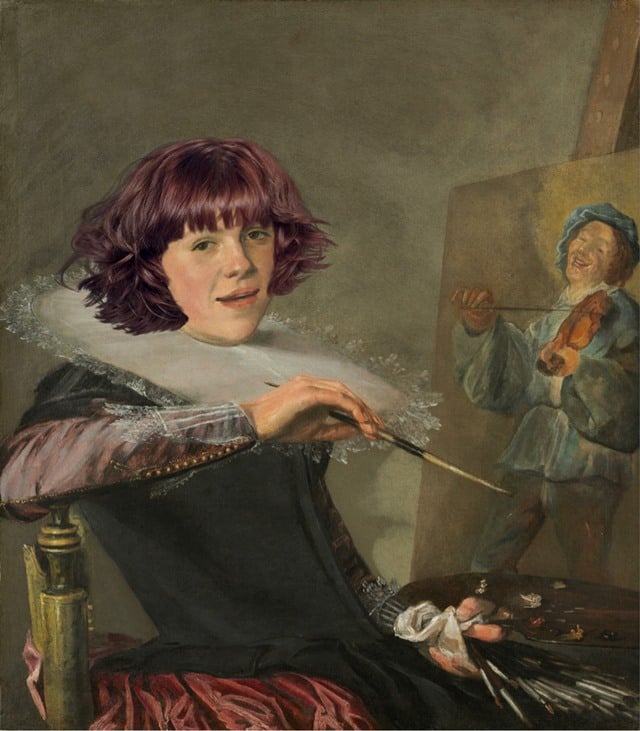
Judith Leyster, Self-Portrait (circa 1630), National Gallery of Art, Washington, DC, with a Perfect365 app makeover.
Rembrandt’s countrywoman, Judith Leyster, was that very rare figure: a female artist in the 17th century. She was just 19 when her contemporaries started to notice her talent. She’s perked up her look, which concealed her hair, with a stylish red wig that gives her a punk edge.
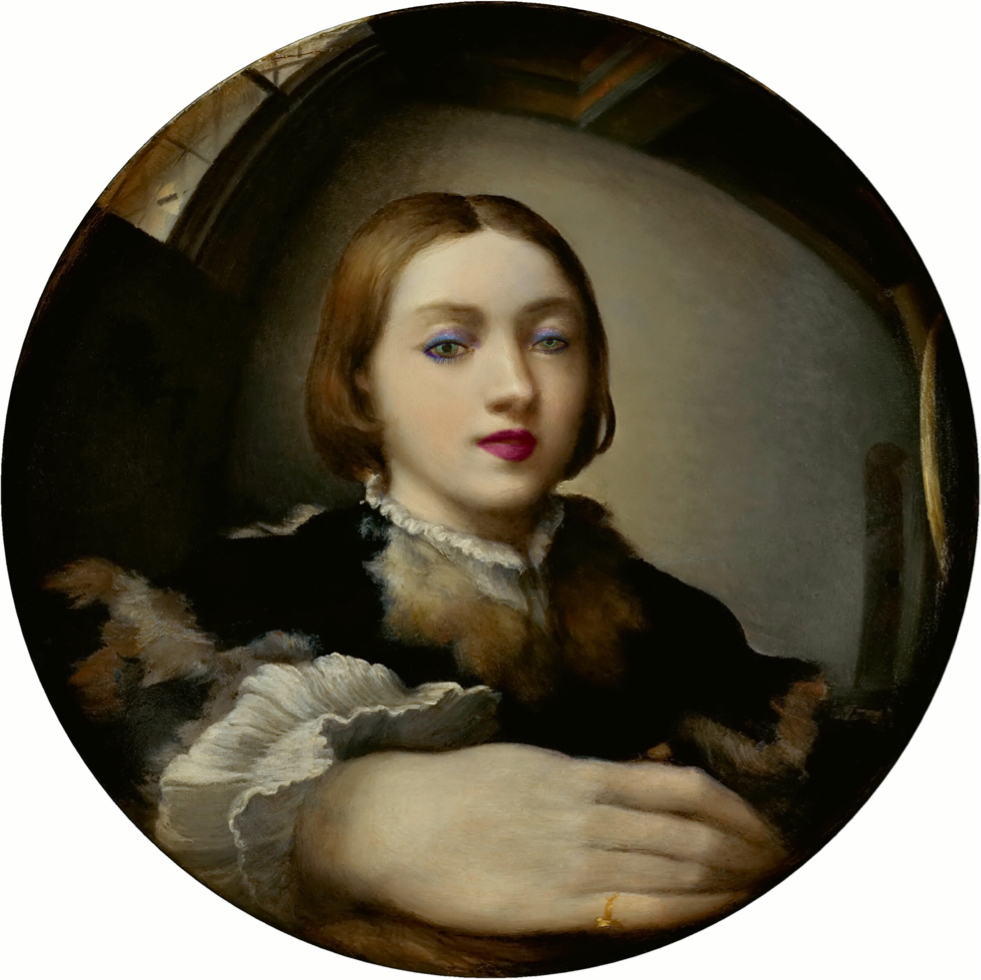
Parmigianino, Self-Portrait in a Convex Mirror (circa 1624), Kunsthistorisches Museum, Vienna, with a Perfect365 app makeover.
Parmigianino’s small Self-Portrait in a Convex Mirror may have served as a way to demonstrate his talent to potential patrons. Here, he puts his best foot forward with some striking lips and lids.
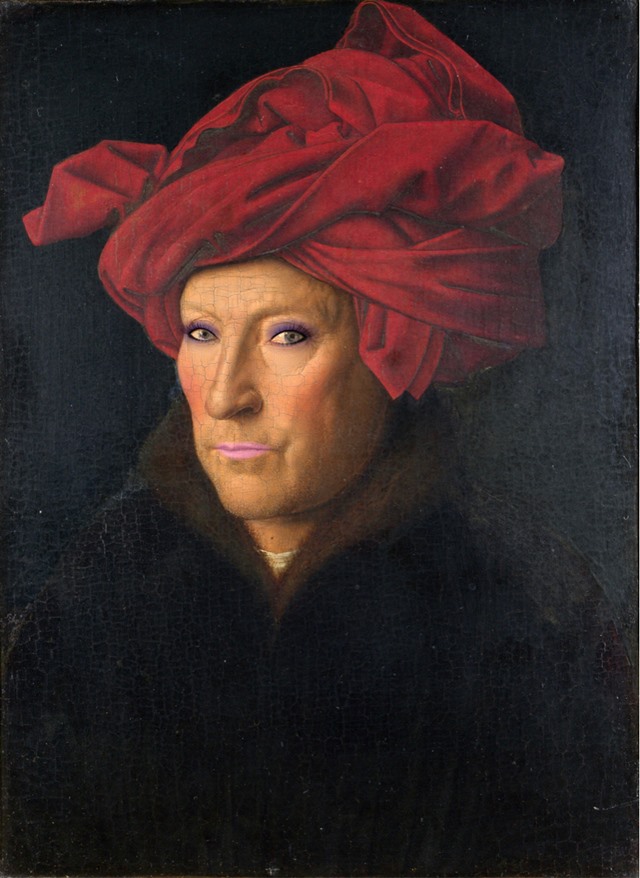
Jan van Eyck, Portrait of a Man (Self portrait?), 1433, National Gallery, London, with a Perfect365 app makeover.
It’s not altogether certain that this painting is a self-portrait by Jan van Eyck, but in any event, the severe-looking man staring out from this panel has softened his appearance by brightening up his eyes and adding some pink to fill out his narrow lips.
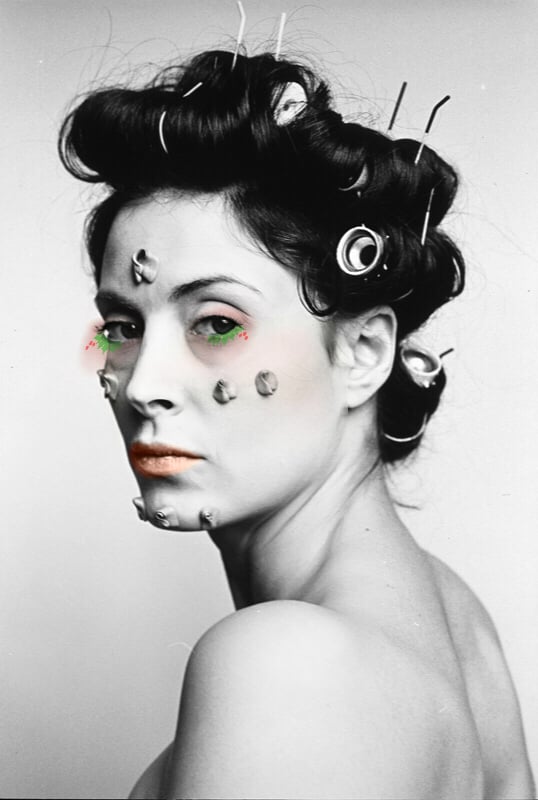
Hannah Wilke, S.O.S.—Starification Object Series (1974–82), with a Perfect365 app makeover.
One of art history’s great feminist artists, Hannah Wilke examined conventional ideas about beauty and femininity. In her S.o.S. Starification Series, she covered herself in vulva-shaped pieces of chewing gum, making the viewer look twice at the typical objectified female form. Here, the black-and-white image gives way to a bit more color.

Egon Schiele, Self-Portrait with Arm Twisting above Head (1910), with a Perfect365 app makeover.
Egon Schiele’s self-portraits, and his portrayals of his lovers, got pretty steamy at times. Here, he spices things up a bit by adding a duckface, lipstick and blush, and a wig that bursts off the page. Hedwig would be proud.
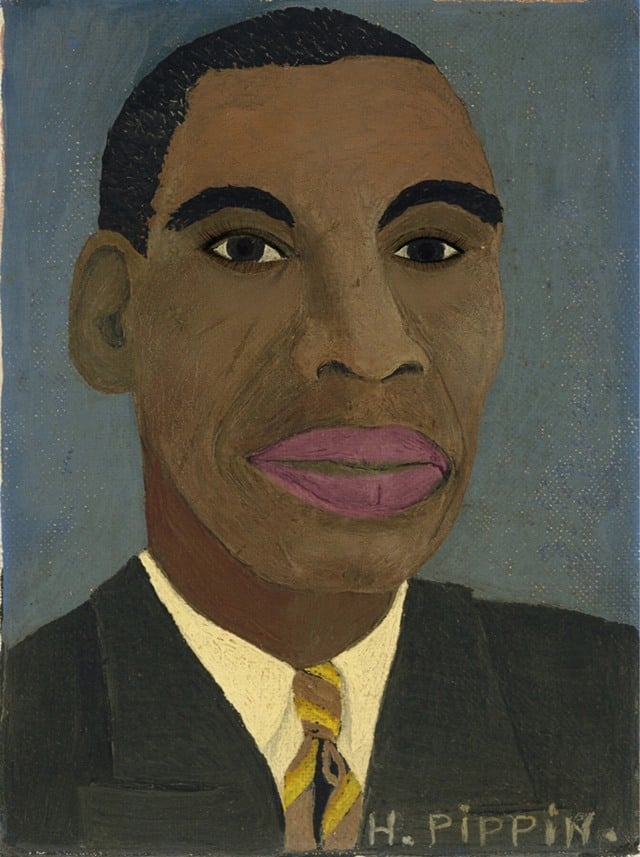
Horace Pippin, Self-Portrait (1944), Metropolitan Museum of Art, New York, with a Perfect365 app makeover.
After sustaining an injury to his arm during World War I, untrained artist Horace Pippin took up art-making as physical therapy. In this self-portrait, one of just two that he painted, he glams it up with some pink lipstick.

Albrecht Dürer, Self-Portrait (1500), Alte Pinakothek, Munich, with a Perfect365 app makeover.
Albrecht Dürer’s masterful self-portrait, marked by rich, cascading brown locks, is completely transformed with a touch of makeup and some platinum curls.
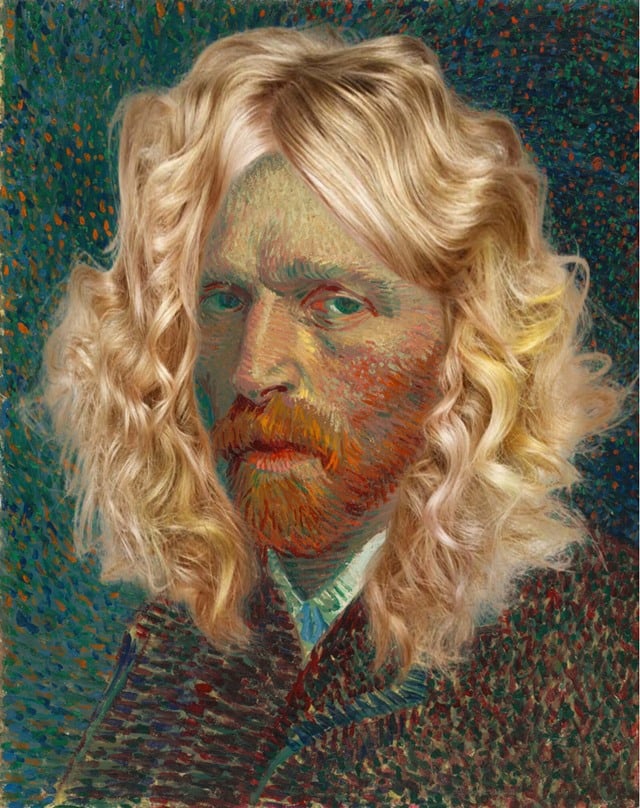
Vincent van Gogh, Self-Portrait (1887), Art Institute of Chicago, with a Perfect365 app makeover.
Vincent van Gogh‘s face is so colorful that we couldn’t really improve on it. But he’s a real rocker with these new locks.
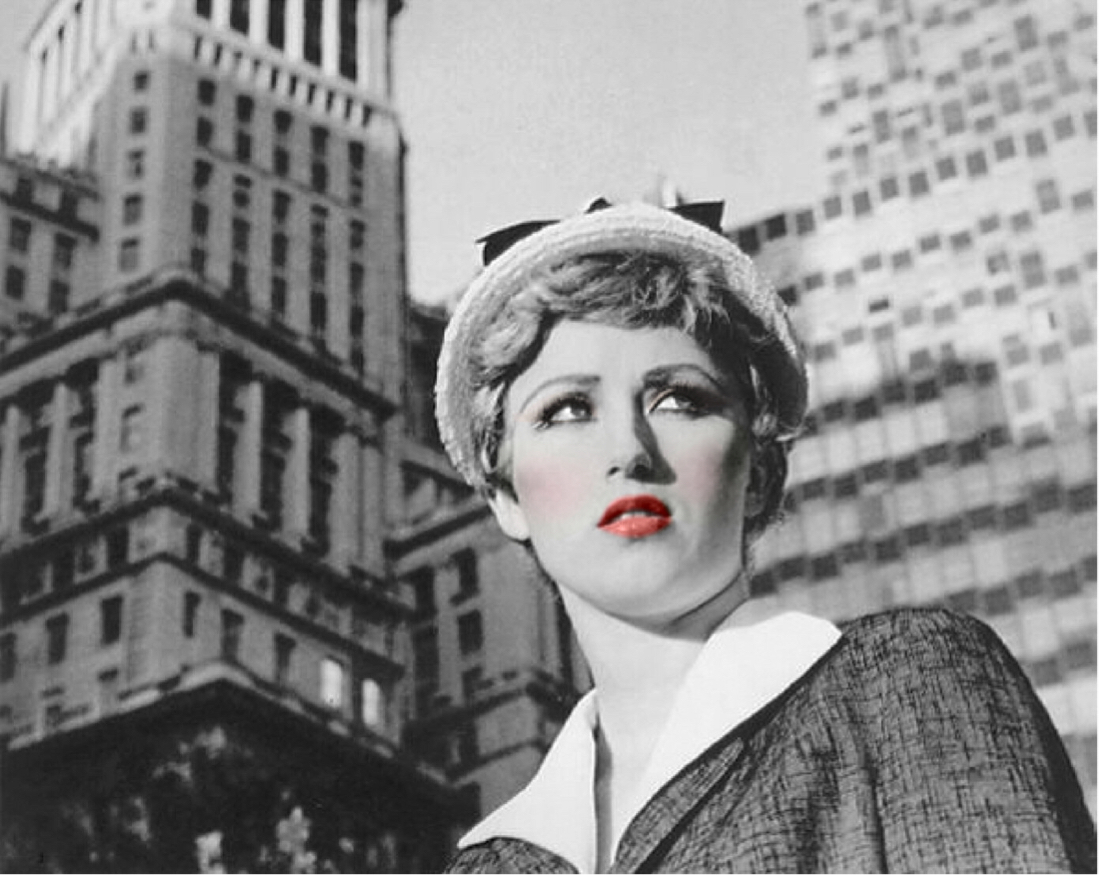
Cindy Sherman, Untitled Film Still 21 (1978), with a Perfect365 app makeover.
Cindy Sherman‘s Untitled Film Stills are perhaps less about self-portraiture than about how we imagine our own lives as playing out on the big screen, or about how artists can make fantasy worlds with the most modest of means, or about creating copies without originals.
But here, a bit of makeup gives this high-concept image the look of a colorized cinema classic.
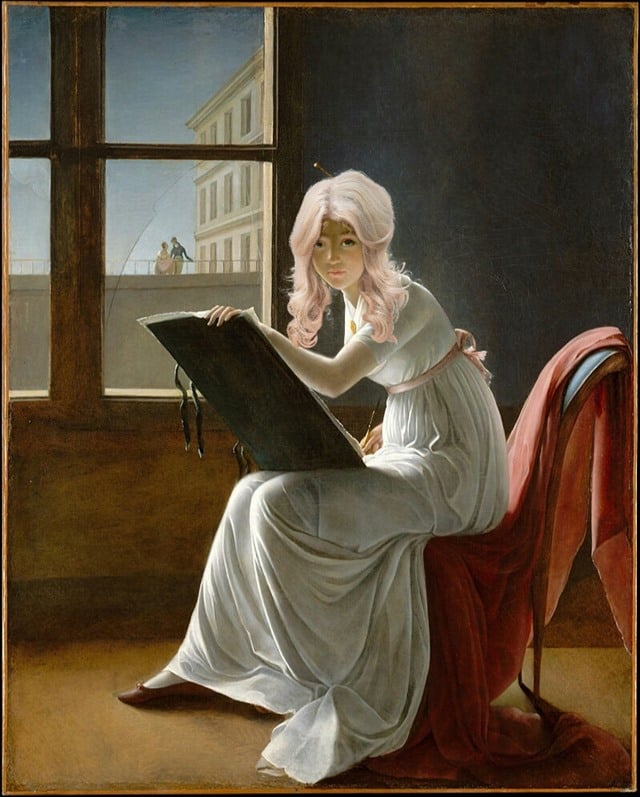
Marie-Denise Villers, Young Woman Drawing (1801), Metropolitan Museum of Art, New York, with a Perfect365 app makeover.
Exhibited at the Salon of 1801, this Marie-Denise Villers painting isn’t necessarily a self-portrait, and in fact was once ascribed to Jacques-Louis David. Villers was a talented student of Anne-Louis Girodet de Roucy-Trioson, who has here augmented her corkscrew blond curls with hair that, truth be told, may be a bit over the top.
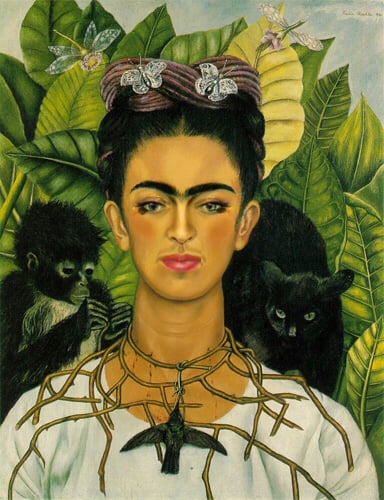
Frida Kahlo, Self-Portrait with Thorn Necklace and Hummingbird (1940), Harry Ransom Center, University of Texas, Austin, with a Perfect365 app makeover.
Frida Kahlo transmuted a painful life into captivating self-portraits that are emblematic of suffering with attributes like a necklace of thorns. In this work, we’ve brightened things up, narrowed her face, put on some lipstick, and added a slight, knowing smile.
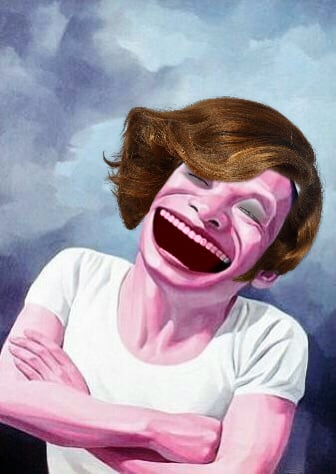
Yue Minjun, Self-Portrait with a Perfect365 app makeover.
Chinese artist Yue Minjun’s self-portraits with a raucous laugh are a parody both of Cultural Revolution-era propaganda posters and of himself. With some lipstick, a bit of eye shadow and a wig, here we’ve taken the self-parody one step further.

Gustave Courbet, Self-Portrait (The Desperate Man), circa 1843–45, with a Perfect365 app makeover.
Artists have often used their own faces and bodies as the place to test out poses and expressions—as Cindy Sherman will tell you, the artist is the cheapest model around. In his self-portrait as a desperate man, Gustave Courbet hammed it up, tore at his hair, and sent his eyebrows to the sky. Here, sporting a smile and pretty blue eyes, he looks a lot less desperate.
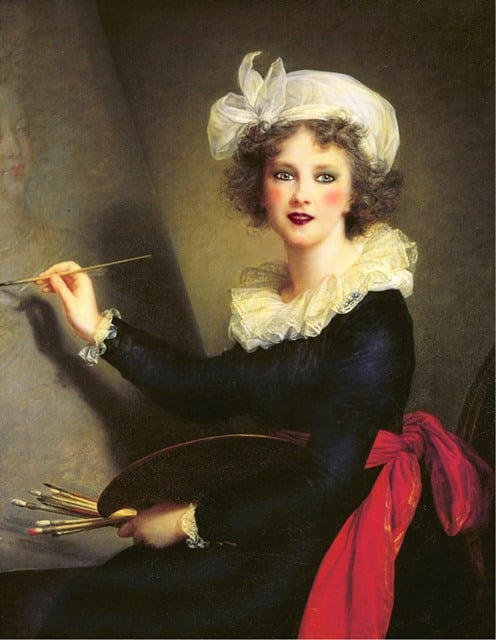
Élisabeth Louise Vigée Le Brun, Self-Portrait (1790), Uffizi Gallery, with a Perfect365 app makeover.
A popular contemporary of Marie Antoinette, Élisabeth Louise Vigée Le Brun was one of the few highly sought-after female artists admitted to the Royal Academy of Painting and Sculpture, and exhibited frequently at the Salon. The artist had a very natural look in her self-portrait, so here, she’s really amped up the femininity.

Carrie Mae Weems, Untitled (Woman Standing) (1990), with a Perfect365 app makeover.
MacArthur grantee Carrie Mae Weems is perhaps best known for her “kitchen table” series, in which she occupies a simple domestic space, typically sporting a casual, unadorned look, sometimes accompanied by family members.
Here, she’s perhaps headed out into the world, and has armored herself with a touch of lipstick and eye shadow.